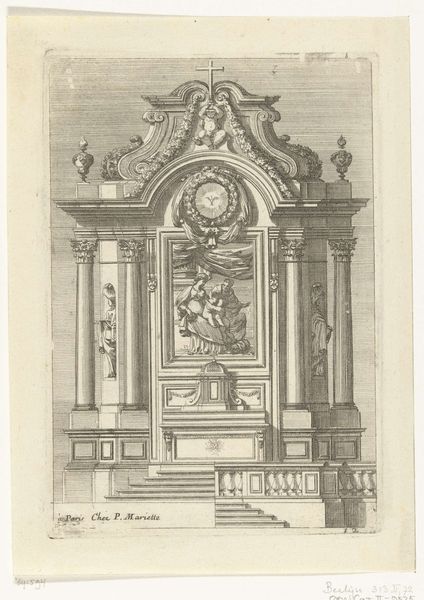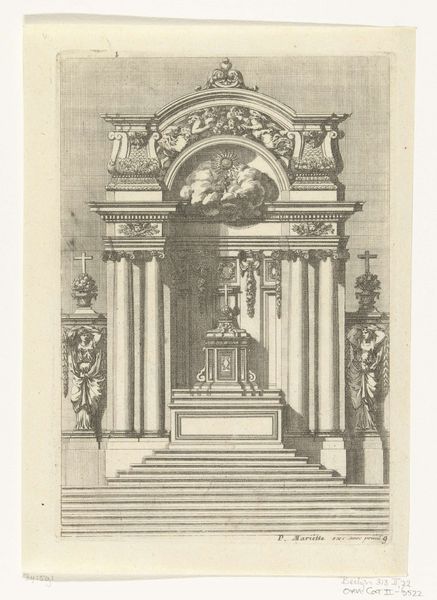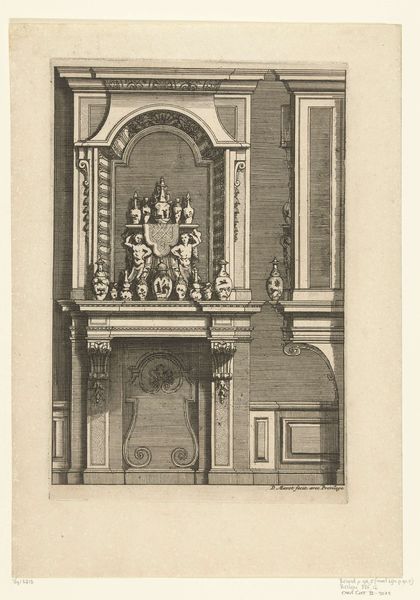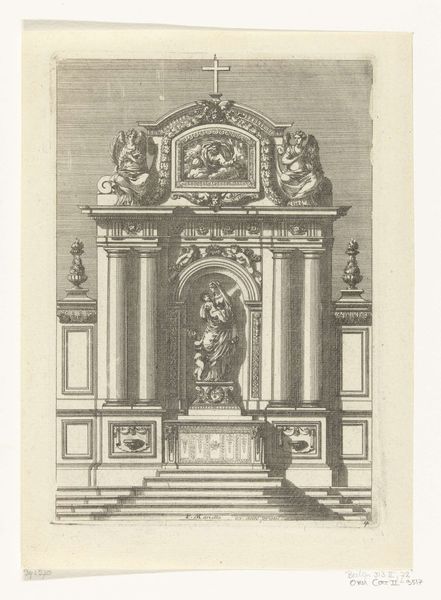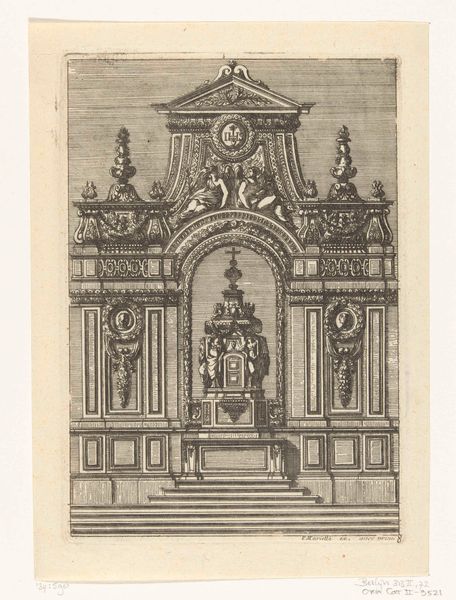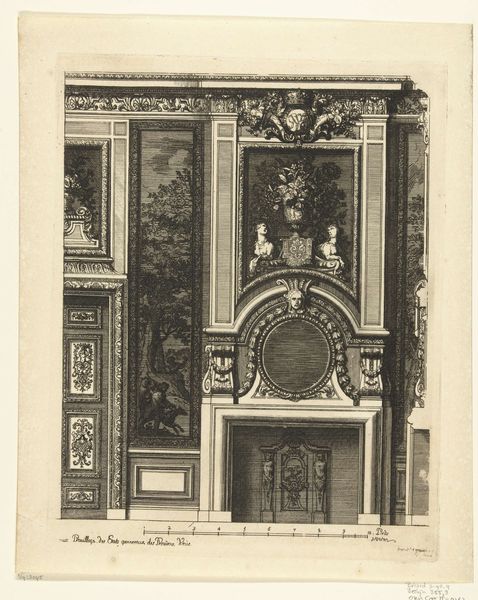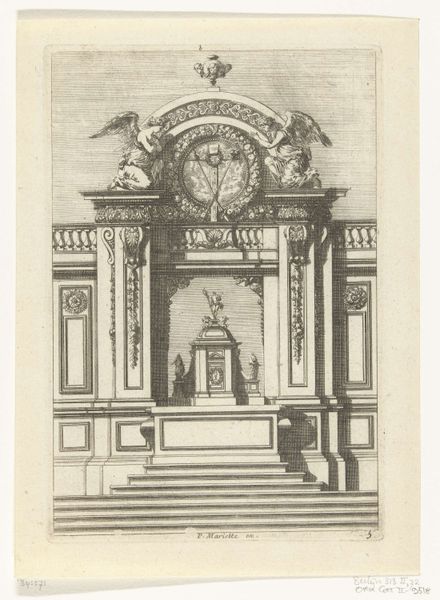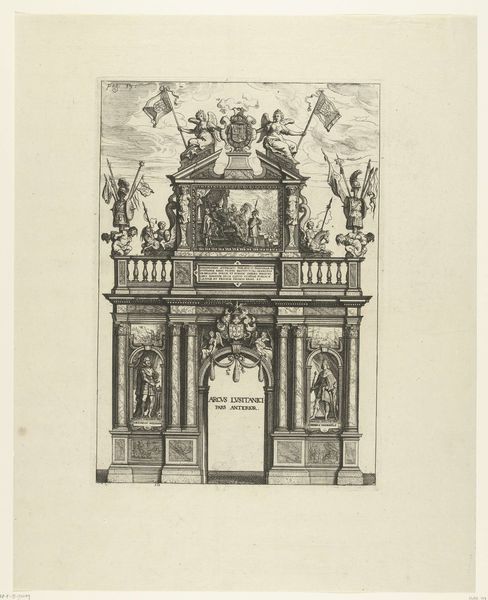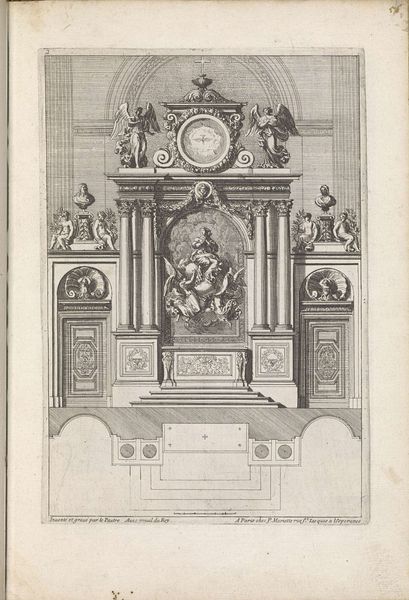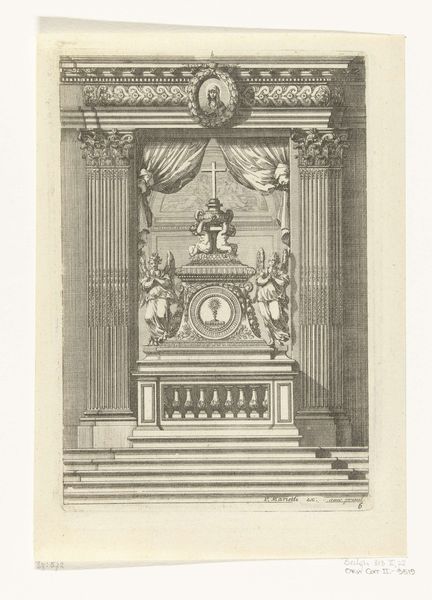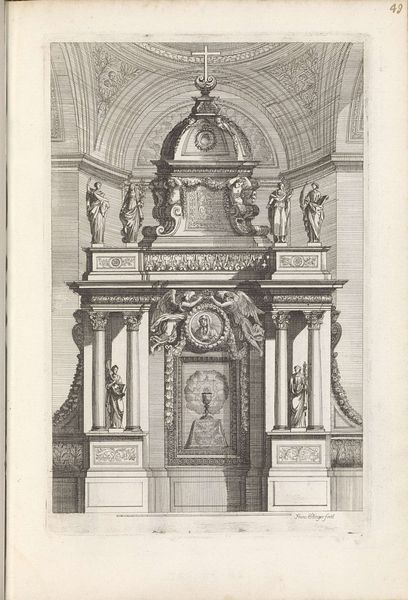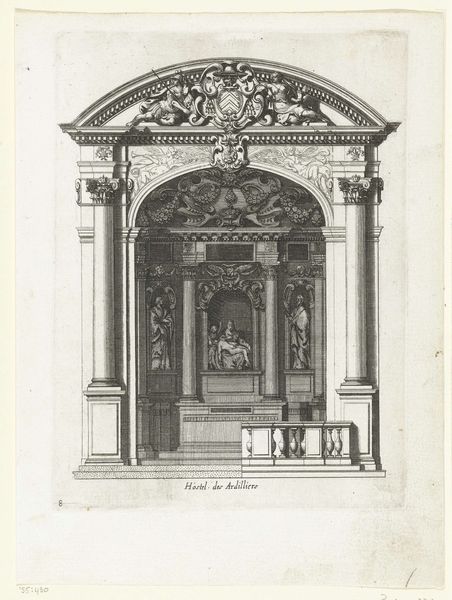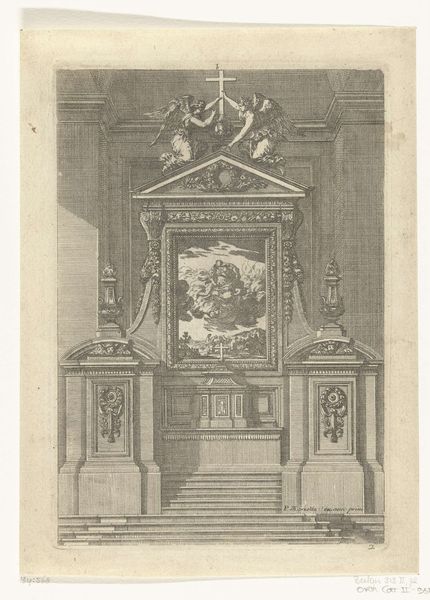
etching, architecture
#
baroque
#
etching
#
etching
#
figuration
#
architecture
Dimensions: height 196 mm, width 139 mm
Copyright: Rijks Museum: Open Domain
Curator: Welcome. We're standing before Jean Lepautre's etching, "Tabernacle with Holy Virgin and Child," dating from about 1666 to 1693. Editor: The intricacy of the lines really jumps out. It gives the architecture depicted such weight and substance, yet somehow it still manages to feel ethereal, almost dreamlike. Curator: Lepautre was renowned for architectural and ornamental prints. This piece gives us insight into the Baroque era's religious spaces but also, how those spaces functioned as signifiers of power and authority. Editor: Looking at the meticulous detail, I'm drawn to the labor involved. Etching demands a controlled process, a series of calculated actions using acid to cut the design. Each line represents deliberate engagement with the copper plate, the making of a matrix for reproduction. Curator: Absolutely. Consider too the iconography: The Virgin and Child are centrally framed, legitimizing a specific lineage of power and divinity. Lepautre engages with the visual rhetoric common to monarchies claiming divine right during this period, reinforcing gendered roles. How do these visual narratives either include or exclude members in society? Editor: And those architectural flourishes – the columns, drapes, and ornate details. They're not just decorative, they're part of the physical language through which dominance is expressed. Consumption and visual art serve social classes and structures in nuanced yet very real ways. Curator: Precisely. It invites us to unpack those societal expectations that define and confine identities. We should analyze the composition not as a singular vision but as a site of complex socio-political exchange. Editor: Seeing the relationship between the work and its material existence has enriched the cultural meanings to appreciate its complexity. It's fascinating how a print, something reproducible, can be so layered. Curator: This allows us to consider architecture's social implications with new perspectives and insights.
Comments
No comments
Be the first to comment and join the conversation on the ultimate creative platform.
